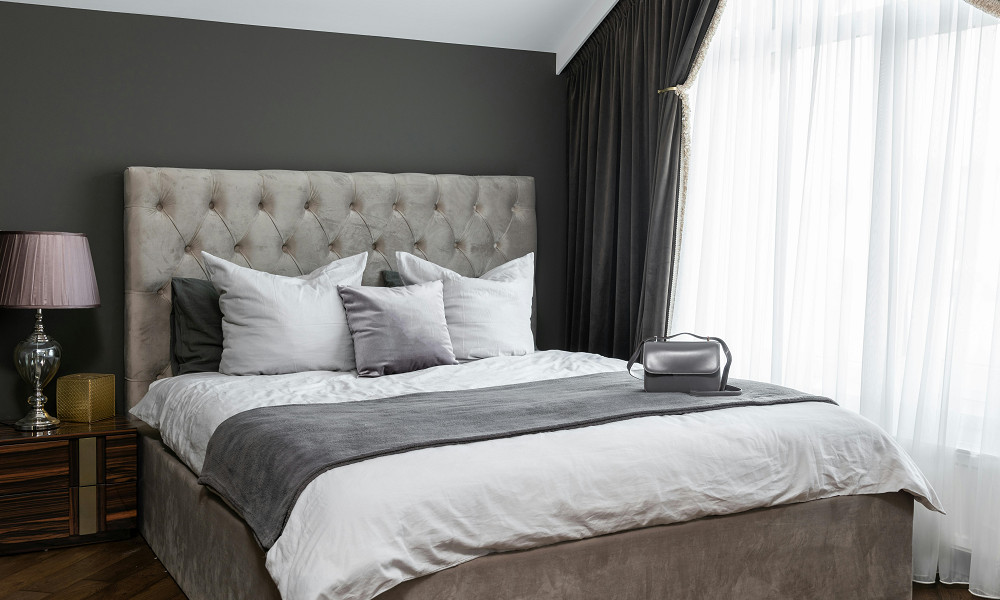Reviews
How to Master Layering Textures in Your Bedroom Décor

Your bedroom is more than just a place to sleep; it’s a personal retreat where you recharge and relax. Yet, many UK homeowners feel their bedrooms lack character or a sense of cosiness. If you’ve ever felt your bedroom looks flat or uninspired, layering textures could be the solution.
Layering textures is about combining different materials and finishes to create a balanced and visually appealing space. This technique not only makes your room look polished but also adds depth, warmth, and personality.
This guide will walk you through how to effectively layer textures to transform your bedroom into a haven of style and comfort.
Understanding Texture in Bedroom Décor
When you hear the word “texture,” it might seem abstract, but in interior design, it simply refers to the look and feel of different surfaces. Textures can be soft, rough, smooth, or rugged. For example, think about how a fluffy rug feels different from a sleek wooden floor or how a velvet cushion contrasts with a cotton sheet.
Texture matters because it makes your bedroom feel alive rather than dull or flat. A room with too many similar textures can look one-dimensional. Mixing contrasting textures, on the other hand, creates interest and balance. Whether it’s the softness of a knitted throw or the sleekness of a polished lamp, each texture contributes to the overall feel of your room. Start by paying attention to the materials you already have in your bedroom, then plan how to add variety.
Focus on the Bed as the Focal Point
In most bedrooms, the bed is the centrepiece, so it’s the best place to start layering textures. Begin with high-quality bedding as your foundation. For example, opt for crisp cotton sheets for comfort and durability. Photo Canvas Prints for Wall Art can make your bedroom more attractive.
Then, add a textured duvet cover for depth. Bamboo duvet covers, such as the ones by Panda London, are an excellent choice for combining style and functionality. They are not only beautifully soft but also breathable, moisture-wicking, and naturally antibacterial—ideal for creating a fresh and inviting sleep environment.
Next, layer in accessories like cushions and throws. Combine cushions in varying sizes, shapes, and fabrics, such as smooth silk and soft wool. Adding a throw blanket—perhaps a chunky knit or faux fur—at the foot of the bed creates a cosy, inviting look. These small changes can make your bed feel like a true sanctuary.
Use Rugs to Add Warmth and Depth
Rugs are an excellent way to introduce texture while making your bedroom more inviting. Even if you have carpeted floors, a well-chosen rug can add an extra layer of warmth and character. These days, natural materials like wool and jute have become popular for their durability and classic appeal.
Consider placing a large area rug beneath your bed to define the space and create a soft landing for your feet in the morning. If your room is smaller, a runner or a sheepskin rug beside the bed can have a similar effect. Pay attention to patterns and colours; a textured rug in neutral tones blends seamlessly into most decors, while a bold design can make a statement.
Layer Window Treatments for Function and Style
Windows are often overlooked in bedroom design, but layering treatments can add both texture and functionality. Start with sheer curtains for a light and airy base. These allow natural light to filter in while adding a soft, flowing texture. Pair them with heavier drapes or Roman blinds for privacy and to block out light when needed.
Using multiple window treatments not only creates visual interest but also allows you to control the atmosphere of your room. Choose materials like linen or velvet for an elegant touch, or go for woven blinds to add a rustic element. Whatever you choose, ensure the textures of your window treatments complement the rest of your décor.
Add Interest with Textured Wall Décor
Walls are a large part of your bedroom, so don’t let them go unnoticed in your design plan. Adding textured wall décor is an easy way to introduce depth and character. Consider hanging woven tapestries or macramé art for a bohemian touch. If your style leans more modern, textured panels or 3D wall tiles can create a striking focal point.
Framed artwork with interesting finishes, such as brushed metal or rustic wood, adds another layer of texture. Even your choice of paint can contribute. Matte finishes feel soft and understated, while wallpaper with subtle patterns or raised designs brings dimension. Whatever you choose, ensure the textures on your walls balance with the rest of your room.
Create the Right Atmosphere with Textured Lighting
Lighting doesn’t just illuminate your room; it can also enhance its texture and mood. Table lamps, floor lamps, and pendant lights with textured bases or shades add visual interest while serving a functional purpose. For example, a ceramic lamp with a ridged surface or a woven rattan shade introduces subtle details that elevate the overall décor.
Light itself can create texture. Use dimmable bulbs or layered lighting with warm tones to highlight key areas of your room, such as the bed or a reading nook. String lights or LED strips behind headboards or shelves can add soft, glowing accents that make the space feel cosy and inviting.
Keep Proportion and Balance in Mind When Layering Textures
While layering textures can transform your bedroom, balance is key to keeping the space harmonious. Too many contrasting textures in one area can feel chaotic, while too few can make the room seem flat. Strive for a mix of soft and hard textures, ensuring they’re spread evenly across the space.
For example, if your bed is heavily layered with plush cushions and throws, opt for simpler textures on nearby furniture, like a smooth bedside table or a clean-lined wardrobe. Similarly, if you have a statement rug, keep the wall art understated. This careful balance ensures every element complements the others, creating a cohesive and visually pleasing design.
Layering textures is an art, but with thoughtful planning, it’s a skill anyone can master. By mixing materials, finishes, and elements, you can create a bedroom that feels warm, inviting, and uniquely yours. Whether you’re starting from scratch or enhancing an existing design, focus on balance, proportion, and personal touches. The result will be a space that not only looks beautiful but also provides a sanctuary where you can relax and recharge every day.

-

 World1 week ago
World1 week agoEthiopian volcano erupts for first time in thousands of years
-

 Health2 days ago
Health2 days ago8 kittens die of H5N1 bird flu in the Netherlands
-

 Legal7 days ago
Legal7 days agoUtah Amber Alert: Jessika Francisco abducted by sex offender in Ogden
-

 US News6 days ago
US News6 days agoExplosion destroys home in Oakland, Maine; at least 1 injured
-

 Health7 days ago
Health7 days agoMexico’s September human bird flu case confirmed as H5N2
-

 Legal3 days ago
Legal3 days ago15 people shot, 4 killed, at birthday party in Stockton, California
-

 World7 days ago
World7 days agoWoman killed, man seriously injured in shark attack on Australia’s NSW coast
-

 Health6 days ago
Health6 days agoMarburg outbreak in Ethiopia rises to 12 cases and 8 deaths




